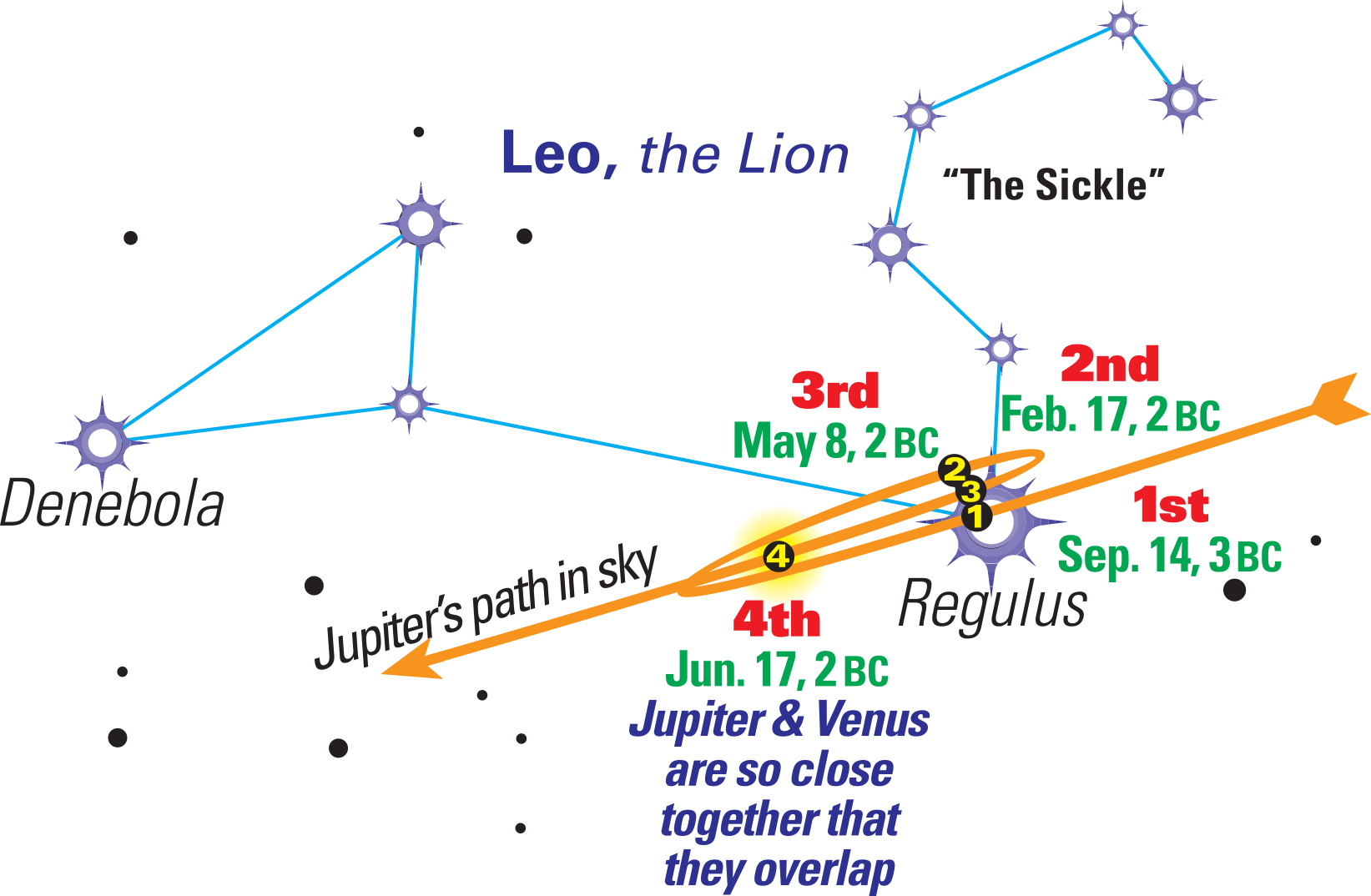The Star of Bethlehem
What was the star of Bethlehem?
No one knows for certain but some scholars think that the Magi witnessed, within a span of 9 months, three conjunctions of Jupiter with Regulus (three times when Jupiter and Regulus were close together), and a finale where Jupiter and Venus blended into one star. To many cultures, Regulus was the “regal” star while Jupiter was the king of the planets. What could be more propitious than these two royal bodies coming together? This event is an example of retrograde motion bringing about several conjunctions. The orange line in the illustration shows Jupiter’s retrograde motion above Regulus (creating a “crown”) and ends in a rare conjunction where two planets overlap (not physically, but from a perspective view). This merging of the planets created a very bright apparition that truly represented a heavenly punctuation. Now remember, Venus is the God of Love, so Jupiter merging with Venus could certainly be interpreted as a birth. Researchers have found no evidence of this 9-month event ever happening before or again. The Magi certainly realized that something rare and special occurred, even if it was only an astronomical event.
What is retrograde motion?
Normally, the planets slowly move eastward in the night sky (along the ecliptic—the path the Sun moves through the stars). However, they sometimes reverse course (retrograde), that is, move westwardly for a bit before resuming their normal eastwardly direction. This reversal of movement is an optical “illusion” caused by Earth’s motion around the Sun—an Earth that is moving faster in its orbit than the outer planet. (This is the same type of effect as when you pass another car. Both you and the other car are moving in the same direction but the other car appears to go backwards as you pass it.)
